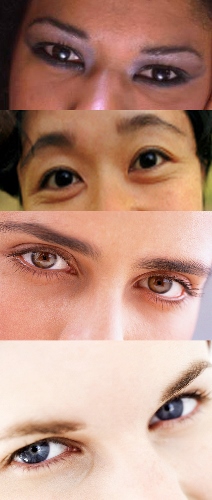02 Jan Putting the sparkle back into your eyes…..your options, with or without surgery
As we age, fat deposits collect under the eyes, the eyelids stretch, and the muscles supporting them weaken. Sun damage, genetics, fatigue, and repeated facial expressions can further expedite wrinkling of this thin, delicate skin around the eyes. There are minimally invasive options to improve crow’s feet, sagging skin, and bags; or, you may be an excellent candidate for blepharoplasty (surgery of the eyelids), which can reshape and adjust the lids for both cosmetic and functional purposes. Each year, over 100,000 men and woman?mostly between the ages of 35 and 65 years old?choose to have eyelid surgery.
Treatments
Minimally invasive treatments are convenient; however, keep in mind that the results are not long lasting.
- Creams that contain retinoid (vitamin A) and antioxidants can help reduce the appearance of wrinkles under your eyes. Retinoid increases skin-cell turnover, which stimulates collagen production. The antioxidants help prevent the breakdown of collagen.
- Injectable fillers plump up the area and soften the wrinkles. These fillers bind to water and fill in the under eye hollows or plump facial folds. Fillers are temporary and will require repeated treatments.
- Autologous fat transfer uses the patient’s own fat to reduce the tired appearance by filling the hollows below the eyes. It is similar to the effect that is achieved with fillers. A small amount of fat is harvested from somewhere on the patient’s body and is then injected beneath the skin and muscle of the cheek and lower eyelid.
- Botox, Dysport, or Xeomin can be injected under the skin to paralyze the muscles in the face that pull the skin and cause wrinkles, e.g., crow’s feet or frown lines between the eyebrows. The resulting smooth skin lasts from three to six months.
- Microdermabrasion uses micronized crystals to remove dead cells and smooth crow’s feet and forehead lines.
- Chemical peels can be used to remove the superficial layer of skin, boost collagen production, and soften static facial lines.
- Fractional laser resurfacing treats a fraction of the skin by causing microscopic “wounds” or tiny holes in the skin. These targeted areas are treated intensively, while leaving the surrounding tissue unaffected. This triggers the skin’s own healing process and stimulates new collagen production. The result is a new, smoother and healthier skin. Fractional lasers are effective for treating wrinkles around the eyes, as well as acne scars, age spots, and melasma.
Surgery
Cosmetically, you may want to reduce the excess skin in your upper eyelids to create a younger, more wide-eyed appearance. In upper eyelid surgery, your physician will follow the natural lines and creases of the eyelid in order to keep the scars as invisible as possible. The incision is made and excess fat, muscle, and loose skin are removed. For patients that seek to add a crease to their upper eyelid, a variation of this surgery is used. Fine sutures are used to close the incision and minimize the visibility of any scar.
Most people seek lower blepharoplasty to reduce the bags under their eyes. There are two common approaches for lower eyelid surgery. In the first approach, the surgeon makes an incision inconspicuously under the lower lashes and removes skin and fatty tissue. Scarring is hidden in the inherent folds. The second approach involves making incisions from the inside of the lower lid to remove excess fat. This method works best for the patient who has a pocket of fat beneath the lower eyelid with no sagging skin.
Blepharoplasty can also be used to correct ptosis, a drooping upper eyelid that is congenital or develops with age. Patients whose field of vision is limited due to ptosis may be able to seek insurance reimbursement since the procedure is medically necessary.
What is the best option for me?
Several factors will be considered to determine what rejuvenation treatment or procedure is right for you, including age, skin type, ethnic background, degree of vision obstruction, and overall health. During your consultation appointment, you will be examined and asked to answer queries concerning vision, tear production, use of lenses, and your desires for improvements.
Blepharoplasty is a good option for patients that want to reduce puffiness, sagging skin, and drooping eyelids with permanent results. A less invasive treatment can address dark circles and fine lines around the eyes. It is important that you have realistic expectations and discuss this with your surgeon.
Regardless of what option you choose, the better you take care of yourself?nutritious diet and exercise?the better your body will heal. If you smoke, now is a good time to quit. Besides causing premature wrinkles, it affects the progress of your body’s ability to heal.
Not to worry, you and Dr. Edds can discuss the best plan of action, whether it includes a series of minimally invasive treatments, eyelid surgery, or a combination of procedures. You’ll have that sparkle back in no time.



